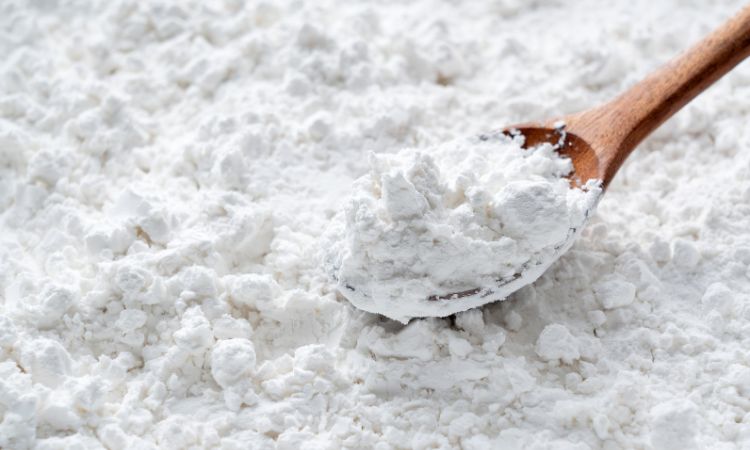
The Rise of Pea Starch: A Sustainable Alternative to Corn and Potato Starch
The global pea starch market size attained a value of USD 436.90 million in 2023. The market is further expected to grow in the forecast period of 2024-2032 at a CAGR of 8.4% to reach USD 903.72 million by 2032. This staggering growth is a testament to the rising demand for sustainable ingredients in the food industry. As consumers become more conscious of their choices and their impact on the environment, industries are actively seeking eco-friendly alternatives. One such alternative that has been gaining prominence is pea starch.
Starch, a crucial component in many food products, has traditionally been sourced from corn and potatoes. However, the environmental concerns associated with these sources have led to the exploration of more sustainable options. Pea starch, derived from yellow peas, has emerged as a viable and eco-friendly alternative. In this blog post, we will delve deep into the world of pea starch, exploring what it is, why it’s considered sustainable, its applications in the food industry, market trends, challenges, and what the future holds for this innovative ingredient.
Pea Starch: An Overview
What is Pea Starch?
Pea starch is a carbohydrate extracted from yellow peas (Pisum sativum). These peas are a rich source of starch and are known for their high amylose content, making them ideal for starch extraction. The process involves washing, milling, and separating the starch from other components of the pea.
How is Pea Starch Extracted and Processed?
The production of pea starch begins with the harvesting of yellow peas. After harvesting, the peas are cleaned, and the outer layers are removed. The remaining peas are then ground into a paste, and water is used to separate the starch from the protein and fiber. This starch-water mixture is then dried to create pea starch powder. The result is a fine, white powder with a neutral taste and odor.
Nutritional Profile of Pea Starch
Pea starch is gaining attention not only for its functional properties but also for its nutritional benefits. It is naturally gluten-free and is a good source of carbohydrates. Additionally, it contains some protein and dietary fiber, contributing to its appeal as a healthier starch option.
The Sustainability Factor
Environmental Impact of Traditional Starch Sources
Corn and potato starch, the most commonly used starch sources, have come under scrutiny due to their environmental impact. The cultivation of corn and potatoes often requires substantial water usage, large areas of agricultural land, and the use of chemical fertilizers and pesticides. Moreover, the carbon footprint associated with these crops can be significant, especially when considering transportation and processing.
Benefits of Pea Starch in Terms of Sustainability
-
Reduced Water Usage: Peas are known for their water-efficient growth compared to other starch crops. They require less irrigation, making them a more sustainable choice in regions prone to water scarcity.
-
Lower Carbon Footprint: The cultivation of peas generally generates fewer greenhouse gas emissions compared to corn or potatoes. This reduced carbon footprint contributes to a more environmentally friendly starch production process.
-
Reduced Land Usage: Peas can be grown in rotation with other crops, helping to improve soil health and reduce the need for additional land. This sustainable farming practice minimizes the impact on natural habitats.
Sustainable Farming Practices for Pea Starch Production
To enhance the sustainability of pea starch production further, many farmers are adopting practices such as crop rotation and reduced chemical usage. These efforts not only benefit the environment but also promote healthier soil and contribute to long-term agricultural viability.
Pea Starch in Food Applications
The Versatility of Pea Starch
One of the key advantages of pea starch is its versatility in various food applications. It can be used as a thickening agent, gelling agent, and stabilizer in a wide range of products. Some of its common applications include:
-
Bakery Products: Pea starch can improve the texture and moisture retention of bread, cakes, and pastries, making them softer and more shelf-stable.
-
Dairy Alternatives: Many plant-based milk and yogurt products use pea starch to create a creamy texture and improve mouthfeel.
-
Processed Meats: Pea starch is employed to enhance the binding and texture of meat products like sausages and burgers, particularly in the growing market for plant-based alternatives.
Common Food Products Using Pea Starch
-
Gluten-Free Products: Pea starch is a popular choice in gluten-free products, such as gluten-free bread, pasta, and snacks, where it helps mimic the texture of gluten.
-
Plant-Based Meat Alternatives: The plant-based meat industry relies on pea starch to provide a meat-like texture in products like veggie burgers and meatless meatballs.
-
Snack Foods: Pea starch is used in various snack foods like chips and crackers to create a crispy and appealing texture.
Benefits of Pea Starch in Food Formulation
-
Texture Enhancement: Pea starch can improve the mouthfeel and overall texture of food products, making them more appealing to consumers.
-
Shelf-Life Extension: Due to its moisture-retention properties, pea starch can extend the shelf life of certain food items, reducing food waste.
-
Clean Label Appeal: Pea starch aligns with the clean label trend as it is a natural, minimally processed ingredient without the need for chemical additives.
As consumer demand for healthier and sustainably sourced foods continues to rise, pea starch has become an invaluable ingredient for food manufacturers looking to meet these demands. Its ability to improve product quality while reducing the environmental footprint makes it a win-win for both producers and consumers.
Consumer Demand and Market Trends
Increasing Consumer Awareness of Sustainable Ingredients
Consumers today are more conscious of the environmental and health implications of their food choices. As a result, there is a growing demand for sustainable and clean-label ingredients. Pea starch fits well into this narrative as a natural, plant-based, and eco-friendly option.
Market Growth and Projections for Pea Starch
The rapid growth of the global pea starch market is a clear indicator of its potential. With a CAGR of 8.4%, the market is expected to reach USD 903.72 million by 2032. This growth is driven by several factors, including:
- The rise in plant-based and gluten-free diets
- Increased awareness of sustainability
- Expansion of the processed food industry
- Growing demand for clean-label ingredients
Notable Brands and Products Using Pea Starch
Many well-known food brands have embraced pea starch as a key ingredient in their product lines. For instance, some leading plant-based meat companies use pea starch to mimic the texture of animal-based meat successfully. Additionally, gluten-free product manufacturers frequently rely on pea starch to improve the quality of their offerings.
Challenges and Considerations
Potential Challenges in Using Pea Starch
While pea starch offers numerous advantages, it is not without its challenges. Some potential issues that food manufacturers may encounter include:
- Sourcing: Ensuring a consistent supply of high-quality pea starch can be challenging, especially during periods of high demand.
- Cost: Depending on the region and supply chain, pea starch may be more expensive than other starches.
- Taste and Texture: In some applications, pea starch may impart a slightly different taste or texture, which requires careful formulation.
Regulatory Considerations and Labeling
The use of pea starch in food products is subject to regulatory oversight, particularly regarding labeling and claims. It is crucial for manufacturers to comply with labeling requirements and accurately represent the presence of pea starch in their products.
Addressing Misconceptions About Pea Starch
Educating consumers about the benefits and uses of pea starch is essential. Some consumers may have misconceptions or reservations about the ingredient, so transparent communication can help build trust and encourage its adoption.
Case Studies
Examples of Successful Products Using Pea Starch
-
Beyond Meat: The plant-based meat company Beyond Meat uses pea starch as a key ingredient in its burgers, sausages, and other products. The success of Beyond Meat has brought pea starch into the spotlight as an essential component of plant-based meat alternatives.
-
Gluten-Free Baking: Many gluten-free baking companies have turned to pea starch to improve the texture and quality of their products. This has led to a broader selection of high-quality gluten-free baked goods.
Testimonials from Companies Making the Switch to Pea Starch
Numerous companies have shared their positive experiences with incorporating pea starch into their products. They highlight improvements in texture, taste, and the ability to meet consumer demand for sustainable and clean-label ingredients.
Future Outlook
Emerging Research and Innovation in Pea Starch
As the popularity of pea starch continues to grow, researchers are actively exploring new applications and processing methods. This ongoing innovation may lead to even more diverse uses for pea starch in the food industry.
Potential Applications Beyond the Food Industry
While this article has primarily focused on the use of pea starch in food products, its potential reaches beyond food. Industries such as textiles, pharmaceuticals, and cosmetics are also exploring the benefits of pea starch, further expanding its market potential.
Predictions for the Future of Pea Starch as a Sustainable Ingredient
The future of pea starch appears promising, with an expected increase in adoption across various industries. Its eco-friendly profile, coupled with its functional properties, positions it as a key player in the shift toward more sustainable and healthier products.
Conclusion
The global pea starch market’s remarkable growth reflects the food industry’s commitment to sustainability and innovation. As we look ahead to 2032 and beyond, pea starch is poised to play an increasingly pivotal role in shaping the future of food production. Its sustainability, versatility, and positive impact on product quality make it a valuable asset for food manufacturers seeking to meet the evolving demands of conscious consumers. By embracing pea starch, we can take a significant step towards a more sustainable and delicious future.



